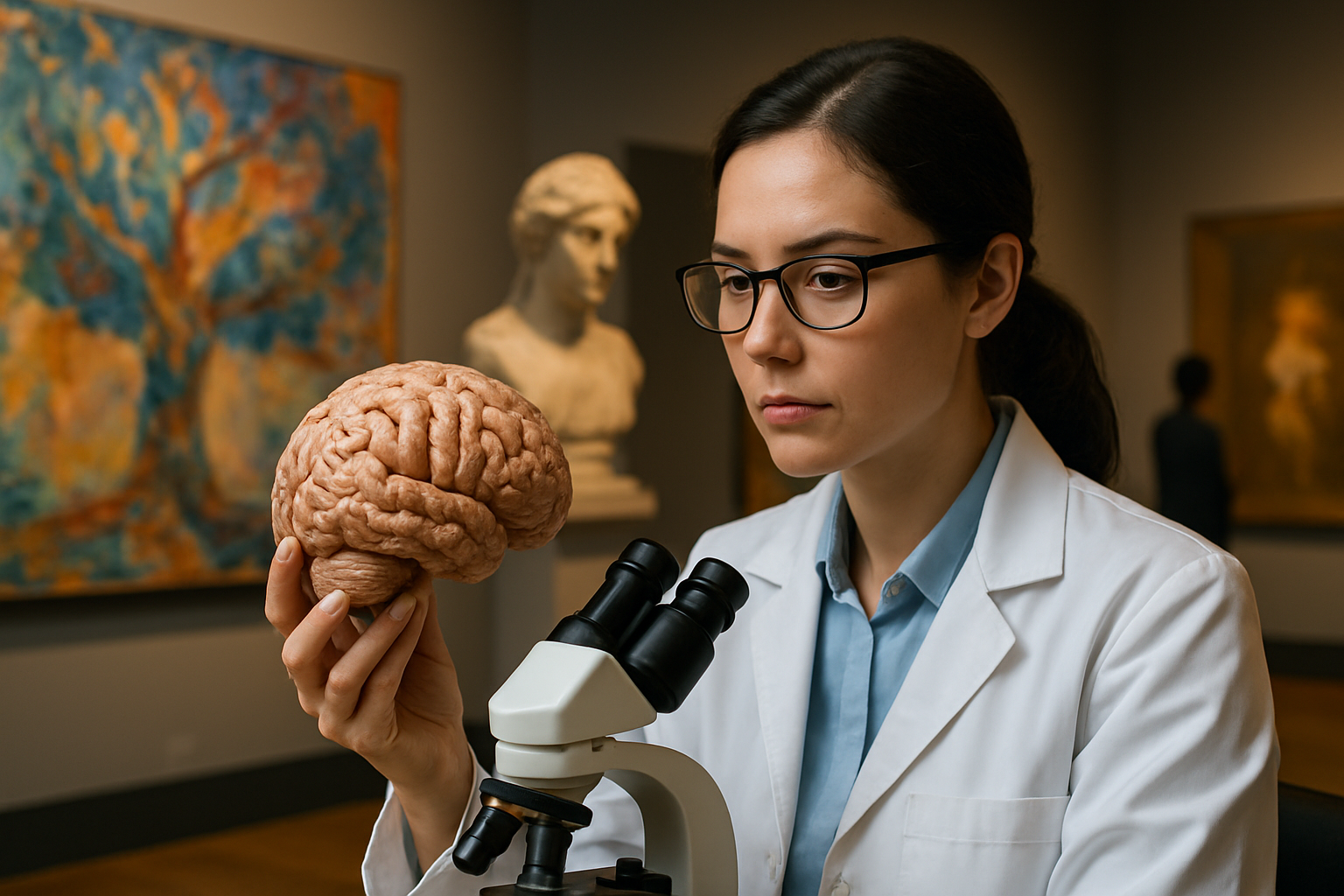Neuroaesthetics: The Science of Beauty and the Brain
Perception of beauty has long been considered subjective, but what if our brains are hardwired to appreciate certain aesthetic qualities? Neuroaesthetics, an emerging field at the intersection of neuroscience and art, explores how our neural processes influence our aesthetic experiences. This fascinating area of study is reshaping our understanding of creativity, art appreciation, and the very nature of human perception. Read below to delve into the captivating world where science meets art.

The foundation of neuroaesthetics lies in the idea that our aesthetic experiences are not purely subjective but are influenced by universal principles rooted in our brain’s structure and function. This concept challenges traditional notions of art appreciation and opens up new avenues for understanding human creativity and perception.
Neural Correlates of Aesthetic Experience
One of the central focuses of neuroaesthetics is identifying the specific brain regions and neural networks involved in aesthetic experiences. Studies using functional magnetic resonance imaging (fMRI) have revealed that viewing artworks activates multiple areas of the brain, including those associated with reward, emotion, and decision-making.
The orbitofrontal cortex, a region involved in processing emotions and rewards, has been found to play a crucial role in aesthetic judgments. Activity in this area increases when individuals view artworks they find beautiful or pleasing. Similarly, the ventral striatum, part of the brain’s reward system, shows heightened activation during aesthetic experiences, suggesting that appreciating art can be inherently rewarding.
Universal Principles of Aesthetic Preference
Neuroaesthetic research has uncovered several universal principles that appear to influence aesthetic preferences across cultures. These principles are thought to be rooted in the way our brains process visual information and may have evolutionary origins.
One such principle is symmetry. Studies have shown that humans generally prefer symmetrical faces and objects, possibly because symmetry is often associated with genetic health and developmental stability. Another principle is the golden ratio, a mathematical proportion found in nature and often used in art and architecture. Brain imaging studies suggest that viewing objects with proportions close to the golden ratio activates reward centers in the brain.
The Role of Cultural Influence and Personal Experience
While neuroaesthetics has revealed universal aspects of aesthetic appreciation, it also acknowledges the significant role of cultural influence and personal experience in shaping individual preferences. The brain’s plasticity allows for the development of unique aesthetic tastes based on exposure to different artistic styles and cultural norms.
Research in this field has shown that expertise in a particular art form can alter brain responses to related stimuli. For instance, professional musicians show different patterns of brain activation when listening to music compared to non-musicians. This suggests that while there may be innate tendencies in aesthetic appreciation, our experiences and learning can significantly modulate these responses.
Implications for Art Creation and Appreciation
The insights gained from neuroaesthetics have far-reaching implications for both the creation and appreciation of art. Artists and designers can use this knowledge to create works that more effectively engage viewers on a neurological level. For example, understanding how the brain processes visual information can inform choices about color, composition, and form in visual arts.
In the realm of art appreciation, neuroaesthetics offers a new lens through which to understand our responses to artworks. It suggests that our aesthetic experiences are not purely subjective but are influenced by both universal neural mechanisms and individual factors. This perspective can enrich art education by providing a scientific foundation for understanding aesthetic responses.
Future Directions and Ethical Considerations
As neuroaesthetics continues to evolve, researchers are exploring new frontiers in the field. One area of growing interest is the potential therapeutic applications of aesthetic experiences. Studies are investigating how engagement with art can impact mental health, cognitive function, and overall well-being.
However, the field also faces ethical considerations. As our understanding of the neural basis of aesthetic experiences grows, questions arise about the potential for manipulating these responses. The use of neuroscientific insights in advertising and design raises concerns about the ethical implications of influencing aesthetic preferences on a neurological level.
In conclusion, neuroaesthetics offers a fascinating bridge between science and art, providing new insights into the age-old question of what makes something beautiful. As research in this field progresses, it promises to deepen our understanding of human perception, creativity, and the profound impact of aesthetic experiences on our brains and lives.





